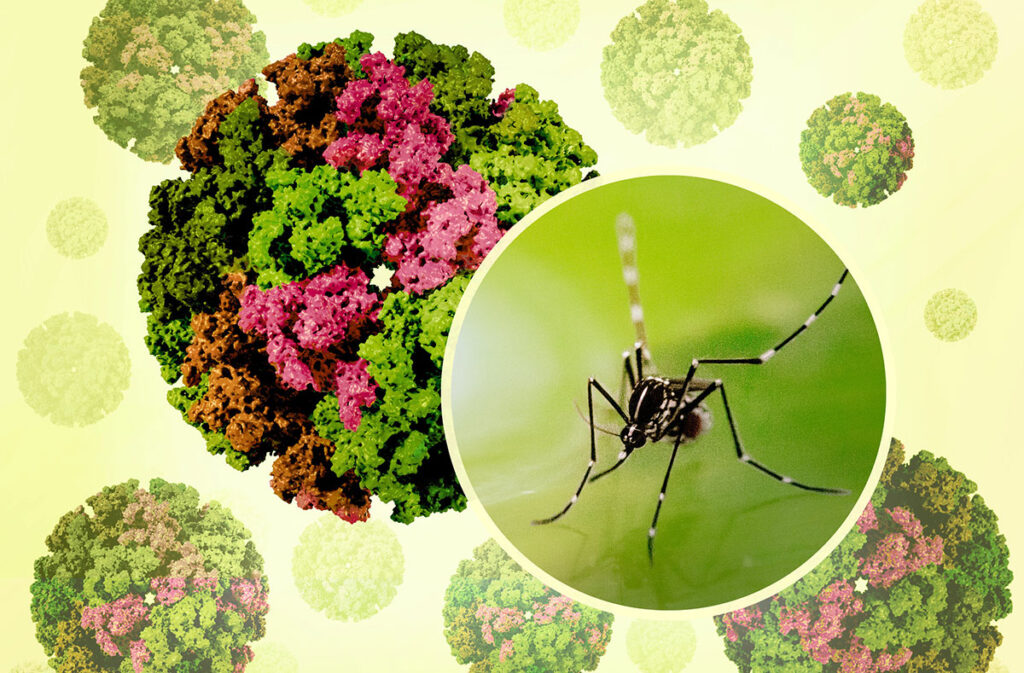A new study published in The Journal of Infectious Diseases provides the first in vivo evidence that chikungunya virus (CHIKV) directly infects cartilage-producing cells known as chondrocytes. Using a genetically engineered virus that glows in infected tissues, scientists tracked the progression of CHIKV in mice, revealing persistent infection in joints and uncovering cellular mechanisms that may underlie chronic arthritis seen in human patients.
The research was led by teams at the Institut Pasteur and Université Paris Cité in collaboration with European partners, and offers a breakthrough in understanding the pathogenesis of chikungunya-induced arthritis—a condition that can last for months or even years following infection.
Key Findings
Bioluminescent Tracking Reveals Joint Tropism
Using a recombinant CHIKV expressing Nanoluciferase (CHIKV-NLuc), researchers visualized viral replication in real time in immunocompetent mice. A strong bioluminescent signal was detected within 24 hours, peaking by day 5 post-infection and persisting up to day 34 in some animals. Crucially, signal localization pointed to sustained viral replication in articular cartilage.
Chondrocytes Identified as Cellular Targets
Histological and immunofluorescent analyses confirmed that infected cells within joint tissues were chondrocytes, the cartilage-producing cells marked by type II collagen expression. These cells tested positive for CHIKV antigens both in vivo (in mouse cartilage) and in vitro (in cultured human chondrocytes), confirming their susceptibility to infection.
CHIKV Induces Chondrocyte Apoptosis and Disrupts Cartilage Homeostasis
Infection of primary human chondrocytes (pHCs) triggered significant apoptotic cell death, activation of matrix-degrading enzymes (MMP-3 and MMP-9), and dysregulation of cytokines associated with cartilage remodeling and inflammation. Notably, cytokines such as IL-6, IGFBP-3, and CD147—linked to tissue destruction in rheumatoid and viral arthritis—were upregulated within hours of infection.
Persistence of Inflammation in the Joint
Histopathological analyses revealed focal cartilage erosions and periarticular inflammation as early as 6 days post-infection, with inflammation persisting beyond 30 days. These findings suggest that viral presence in joint tissues can promote a sustained inflammatory response even after systemic viral clearance.
Implications for Public Health
Chikungunya virus has emerged as a significant global health concern, with recent outbreaks extending beyond endemic regions in Africa and Asia to the Americas and Europe. Although the acute febrile illness typically resolves in days, a substantial subset of patients develops prolonged arthralgia and arthritis, severely impacting quality of life and healthcare resources.
This study offers critical mechanistic insight into how CHIKV contributes to chronic musculoskeletal disease by directly infecting cartilage cells and altering their function. These findings may inform future antiviral strategies, vaccine development, and clinical approaches to managing post-viral arthritis. Moreover, better understanding of viral persistence in immune-privileged tissues like cartilage has implications for other alphavirus infections and long-term sequelae of emerging pathogens.
For military personnel, first responders, and populations in regions where Aedes mosquitoes are endemic, these findings underscore the urgency of continued investment in arboviral surveillance and medical countermeasures to protect national health security.
A Step Toward Therapeutic Intervention
By establishing chondrocytes as key viral targets and demonstrating persistent inflammation in joint tissues, this work lays a foundation for therapeutic research into blocking alphaviral arthritis at the source. The bioluminescent imaging model also offers a powerful platform for screening antiviral compounds and understanding host–pathogen dynamics in real time.
Further research is needed to validate these findings across other models and human tissues, especially given the limitations of mouse-based systems and artificial inoculation routes. Nevertheless, this study marks an important advancement in the field of viral arthritis.
Legros V, Belarbi E, Jeannin P, et al. Use of Recombinant Chikungunya Virus Expressing Nanoluciferase to Identify Chondrocytes as Target Cells in an Immunocompetent Mouse Model. The Journal of Infectious Diseases. 16 June 2025.
Further Reading:
CDC: Areas at Risk for Chikungunya
CDC: What is the Status of Chikungunya in the United States
PAHO: With rising cases, experts discuss Chikungunya spread in the Americas


